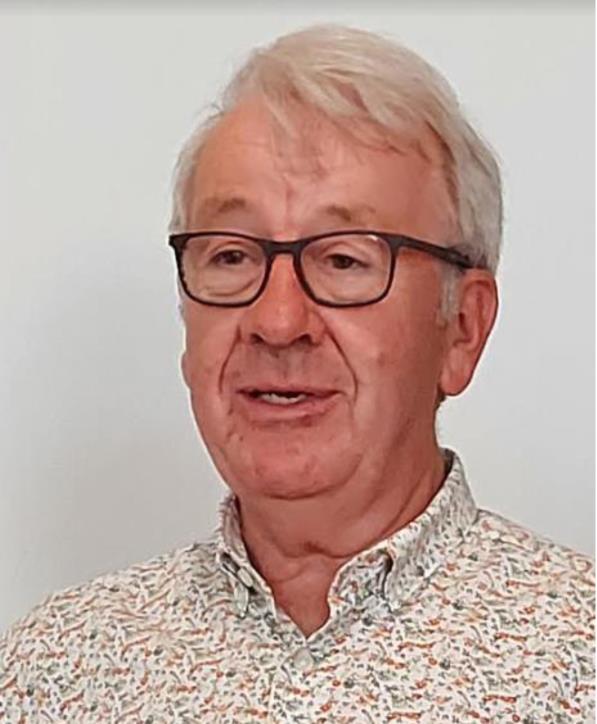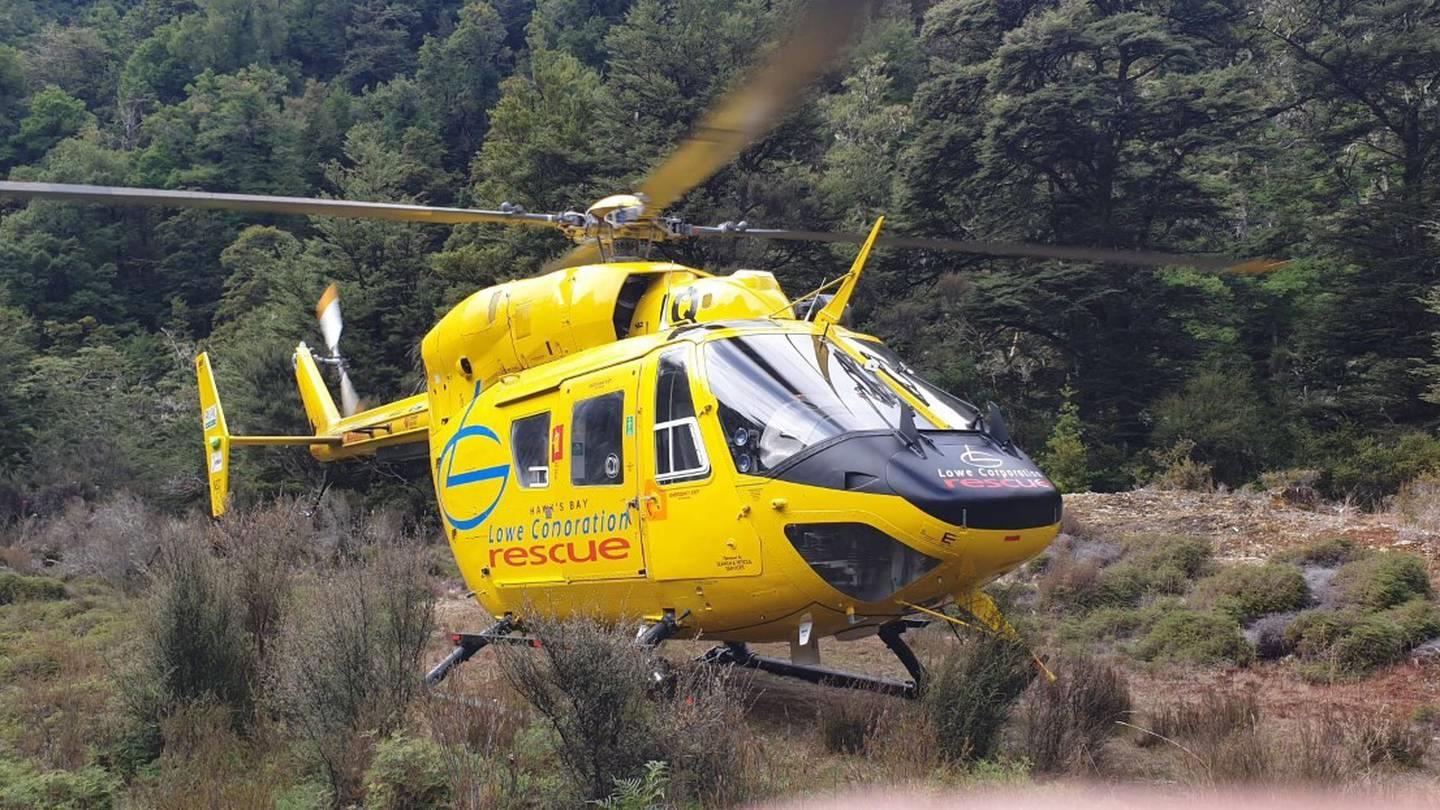 Ian provided the history of the local helicopter rescue service starting in the late 1960s when the helicopters used were primarily crop sprayers and the patients needed to be strapped into a stretcher mounted on the helicopter skids.
Ian provided the history of the local helicopter rescue service starting in the late 1960s when the helicopters used were primarily crop sprayers and the patients needed to be strapped into a stretcher mounted on the helicopter skids.The paramedic would sit in an adjacent seat in the cockpit but communication with the patient was almost impossible given the engine noise and the wind. By 1971 the local agricultural helicopters were attending between 20 and 30 rescues each year.
1984 saw the establishment of the Hawke’s Bay Helicopter Rescue Trust (HBHRT) comprising representatives from the Porangahau Diving Club, Waimarama Surf Club, Police, Civil Defence and others. While originally established primarily for water rescues, in 1989 the service expanded to include patient transfers, police searches, accident recovery and marine emergencies using a Bell Jet Ranger helicopter.
 In the early 1990s, through the generosity of Hastings businessman Mike Toogood, the service purchased a Eurocopter AS350BA Squirrel helicopter and secured sponsorship support from Lowe Walker NZ Ltd. The first helicopter hangar was built at HB Regional Hospital.
In the early 1990s, through the generosity of Hastings businessman Mike Toogood, the service purchased a Eurocopter AS350BA Squirrel helicopter and secured sponsorship support from Lowe Walker NZ Ltd. The first helicopter hangar was built at HB Regional Hospital.Lowe Walker later changed its name to Lowe Corporation and it continues to be the trust’s principal sponsor. In 2009 the trust moved to a twin-engine BK117 rescue helicopter. Civil Aviation rules on flying over built-up areas had changed, the trust needed better access to patients during flight and it provided the ability to carry heavier weights with better performance.
In late 2018 a totally refurbished BK117D2 was acquired. That year also saw the restructuring of rescue helicopter services across New Zealand reducing from 18 to 15 bases and only three contracts; Auckland and Northland, Central (North Island south of the Bombay hills) and South Island. HBHRT joined forces with five others to form the Central service.
 HBHRT has three pilots, three crewmen and three Rapid Sequence Intubation qualified paramedics (all full-time employees) and five part-time staff. Callouts now number around 400 per year with 80% of missions providing urgent medical assistance at accident scenes or inter-hospital transfers for the critically ill.
HBHRT has three pilots, three crewmen and three Rapid Sequence Intubation qualified paramedics (all full-time employees) and five part-time staff. Callouts now number around 400 per year with 80% of missions providing urgent medical assistance at accident scenes or inter-hospital transfers for the critically ill.Last year, for example, 144 accidents were attended, 92 medical events and 32 search and rescue missions. 129 patient transfers took the total missions for that year to 397. As with many other charities, funding is an ongoing issue. Prior to 2018, the $2.5m budget was shared 50:50 with the government. Now the budget is around $3.0m p.a. with the government sharing with the community on a 60:40 basis.

This still leaves around $1.25m p.a. for the trust to find. Costs are high:
• Night vision goggles - $18,000
• Winch - $380,000
• Lifejacket - $3,000
• One rotor blade - $70,000
• Average mission cost - $7,000 Ian acknowledged the appointment of club member Denise Primrose to the Board of Trustees and the support the Board gives to him and his team. Ian finished his presentation with a description of three recent missions as being fairly representative:
• A young woman thrown and trampled by a horse (56 broken bones but is now back eventing)
• An older woman who suffered a stroke while gardening (and made a full recovery) • A successful search for a German yachtsman washed overboard 50 Kms off the Gisborne coast.
The closing thought offered by Bob Brady was fit for the occasion given the service’s dependency on community funding:
“You may need us some time. We need you now”
